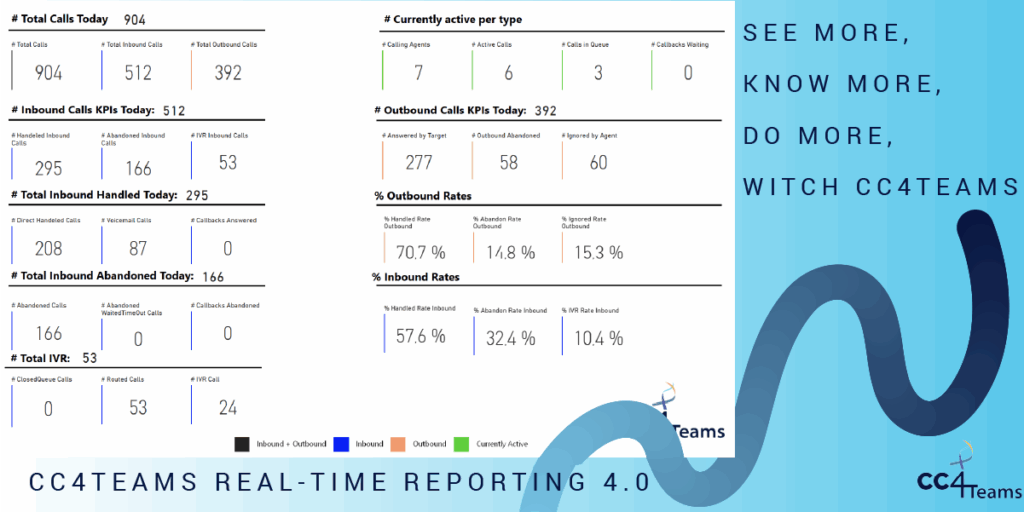Go digital to ensure business continuity in the contact center space
Pandemic disruption no longer an excuse for poor customer service.
“Due to COVID, it will take longer to answer your call… you are in a queue and we will try…” Heard it before? So have your customers! A reliance on traditional phone systems and customer goodwill are no longer enough to guarantee business continuity during the second wave of the COVID pandemic. For customer service organizations, that means investing in digital contact center technology to emerge post-disruption with both customer and employee satisfaction intact.
“Due to COVID, it will take longer to answer your call… you are in a queue and we will try…”
A surge in demand during lockdown meant some contact centers dealt with an additional 35,000 calls in April alone. This logistical challenge was compounded by the rapid transition of entire workforces to remote working models. In many cases, this was not handled successfully. When surveyed, 62% of customer service organizations admitted they would have to manage remote working better in a second wave.
Customer patience is waning – organizations must be prepared for the second wave and beyond
In the first lockdown, contact centers with a poor digital infrastructure survived on customer goodwill and patience, using the pandemic as a reasonable explanation for disruption. There is no room for such error in the second wave, with over half of customers expecting service to have normalized despite pandemic disruption. Contact centers must remain reachable.
A collaborative Unified Communications platform, supported by dedicated contact center software, is the only way to deliver this uninterrupted customer service in all situations. A truly digital contact center will enable businesses to improve in areas such as enhancing customer experience, satisfying customer needs and – most importantly – ensuring business continuity.
1 Flexibility is key to ensure consistent reachability
Flexibility is vital for business continuity during disruptive periods and many organizations have returned to total work from home arrangements. With current social distancing measures expected to remain for the foreseeable future and most contact centers unable to accommodate their entire workforce socially distanced, organizations will need the flexibility to scale their workforces as necessary. Many will not be returning to their traditional phone systems for this reason.
A Unified Communications platform, such as Microsoft Teams, supported by enterprise-grade contact center software, unlocks true flexibility for agents.
By choosing a collaborative platform in the cloud, provided they have a stable internet connection, agents can operate anywhere. Businesses can transition their entire workforce to remote working using a cloud solution in as little as a single day, with no impact on their service presence or their ‘reachability’ for customers.
2. Multi-channel communications and reduced TCO – the benefits of a full-service digital platform
A major advantage of going digital is the reduced costs. Instead of expensive phone systems, such as a PBX, that are inflexible and becoming very outdated, the total cost of ownership of Unified Communications platforms are very low. For example, Teams merely requires a recurring monthly subscription.
The benefits go further. Unified Communications platforms not only save money when budgets are limited, they can be enhanced with contact center software, offering higher value to organizations than traditional phone systems.
According to research, 90% of customers believe one channel of communication is not enough to satisfy expectations. Organizations need to offer customer support via email, live chat, social media and through traditional channels.
The combination of Microsoft Teams with enterprise-grade contact center solutions unlocks omnichannel capabilities unavailable in the standard version. Features such as intelligent skills-based routing, advanced supervisor settings and call recording go beyond the scope of traditional telephony systems, at a significantly lower price.
3. The forgotten role of employees in business continuity
An important element of business continuity often overlooked is the role of employees – happy employees, happy customers!
Organizations must understand their agents are also working remotely and need to keep in touch with colleagues as well as customers. A failure to pay attention to this integral area of business continuity can negatively affect employee satisfaction, and as a result, customer experience.
By providing the tools to work optimally, organizations can help employees keep in touch and feel empowered to consistently perform their job to a high standard. CC4Teams requires minimal training and is easy for employees to use and manage, improving employee satisfaction and producing high levels of customer service in difficult circumstances.
4. BI reporting helps visualize historic and current performance
In times of widespread disruption, it is essential to visualize the customer journey and identify whether organizations are doing enough for customers. Without sufficient reporting capabilities while home working, contact center managers lack valid information about agent performance and how this compares pre-pandemic. As agents increasingly work from home, they must remain accountable and managers need to understand employee productivity.
Dedicated contact center technology, combined with Unified Communications platforms, gives managers access to additional PowerBI reporting dashboards for analysis and visualization of real-time and historic reporting data. These additional insights can gauge customer satisfaction across communication channels, whether the contact center is meeting KPIs and how it could improve.
The ability to leverage this information is key to organizational success.
Cloud-based solutions can help surpass pre-pandemic performance
It is no longer acceptable for organizations to be unreachable due to business disruption.
While some organizations have used the pandemic to justify poor customer experience, cloud-based contact center solutions offer organizations the chance to both match their pre-pandemic customer service and improve on it.
Pandemic disruption no longer an excuse for poor customer service
Marcel Reuvers is Chief Executive Officer at ContactCenter4ALL.






